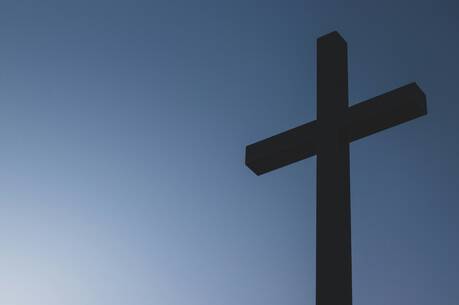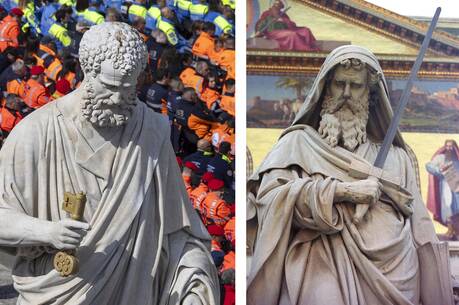Alleluia!
One of the most impressive scenes in the movie “The Wizard of Oz” is Dorothy’s entrance into the Land of Oz. At that moment, the original sepia tones of the film become brilliant Technicolor. Tornado-beaten earth gives way to a boldly colorful magical land, where everything is strange but beautiful. The transformation is striking!
I am reminded of this scene as I reflect on the transformation that we celebrate at Easter. I do so not only because of the spectacular splash of color that characterizes the feast, but because of the all-encompassing transformation that Easter promises. In a way similar to but far surpassing that scene, a wondrous world of mystery opens up before us, inviting us to step into it.
The movies are not the only medium that re-enacts transformation. The thread of dramatic reversal is woven throughout the readings of the Easter Vigil. They lead us through the chaotic waters of creation over the rainbow to the saving waters of baptism; they carry us safely through the threatening sea and the frightening wilderness to a place of hope and promise; they move us out of terrifying darkness into the hopeful light of a new day. In sepia colors, they bring us to the threshold of a vista more glorious than the Emerald City. This vista is not a fanciful dream, as was Dorothy’s. It is real, as real as life and death. Actually, it is as real as death and new life.
Our first step out of the sepia world of the past into the glittering world of mystery is really a step into the waters of baptism. The Easter Vigil readings prepare us for that climactic moment when we make our initial plunge into saving waters or renew our baptismal commitment. The words we pronounce are simple: I do renounce! I do believe! But as is the case in every covenant commitment, these words transform us into new people. We wear new clothes and surround ourselves with fresh plants to remind ourselves of this new life.
The Gospel readings for both the Vigil and the Mass of Easter Day report the utter confusion of Jesus’ followers. The women, who rose early in the morning, went to anoint a dead body. Confronted by the empty tomb, Mary concluded that Jesus’ body had been taken. When Peter and John arrived at the tomb, they did not understand what had happened. No one seems to have expected anything like a resurrection. But then, who could blame them? The resurrection was a manifestation of the mysterious power of God, not some imaginative M.G.M. production.
The Gospels do not describe what happened to Jesus at the moment of resurrection; they recount how his followers experienced its effects. In fact, all of the Easter readings focus on the implications of the resurrection in the lives of Jesus’ followers. Paul instructs his converts that joined to Christ, they must now live a new way. Having been raised with Christ from the dead, they must purge themselves of their old way of living. They are on the threshold of newness. A wondrous world of mystery has opened up before them, inviting them to step into it.
We are not unlike those first followers. Though we know well the Easter story, we never seem fully to grasp its meaning. Like them, we so often continue to live burdened with our dashed hopes and with our misunderstanding of God’s mysterious power. Like them, we come to the tomb and expect to find death, but instead we find signs of a new life that we cannot even begin to comprehend. Like them, we do not realize that our history has been broken open and is now filled with the resurrected presence of Christ.
Unfortunately, the transformation of which the readings speak is not easily recognized. Our world overwhelms us with evidence of death and destruction and not with signs of the lavish life of the Emerald City of Oz. Despite this, our faith assures us that the tomb is empty because Jesus has risen; it assures us that death has been swallowed up by life. It is only in faith that we can accept this mystery. But if we do accept it and live our lives believing that this has indeed happened, we will make it real in our world.
Paul tells us how to do this. We must purge ourselves of malice and wickedness, of resentfulness and revenge. We must refrain from taking delight in the misfortunes of others and from taking advantage of them for our own benefit. Instead we must live in sincerity and truth, neighborliness and honesty. Easter is a time to celebrate life, to value life in all of its forms and at all of its stages. A wondrous world of mystery has opened up before us, inviting us to step into it.
This article also appeared in print, under the headline “Alleluia!,” in the April 14, 2003, issue.







